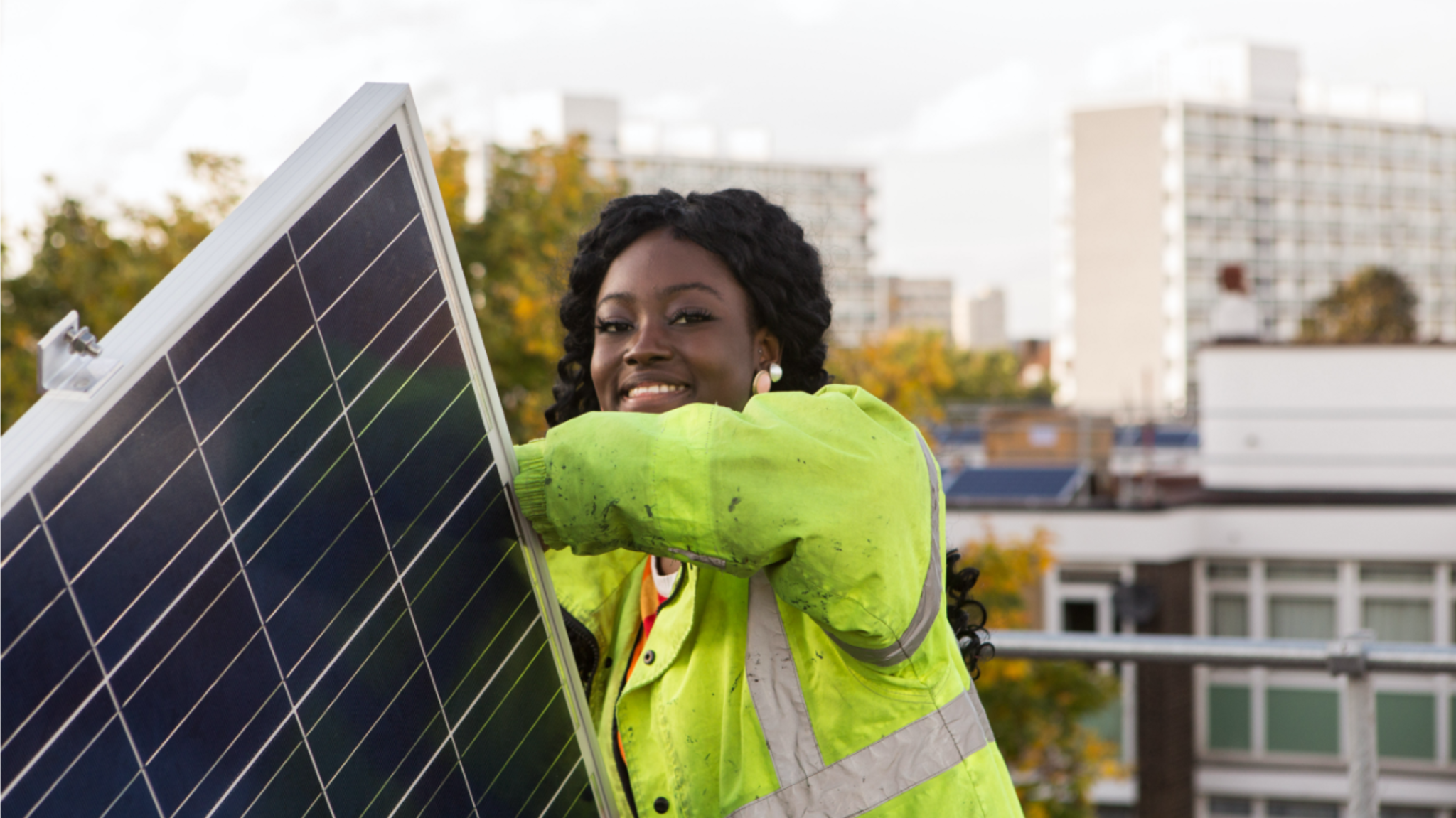Climate Crisis
The high-rise community with its own solar power
The Bartlett has helped enable the UK’s first peer-to-peer electricity market which allows social housing tenants to directly benefit from the solar PV array and communal battery.
From the roof of Elmore House, you can see most of Brixton’s Loughborough Estate: social housing built by London County Council in the 1950s. Nearer at hand, you can also see a series of solar panels and brand-new batteries. Elmore House contains 63 households, but it is also home to a small revolution in renewable energy. In 2012, one of the first cooperatively owned installations of solar photovoltaics for social housing tenure was installed on its roof.
When batteries were added in early 2021, a new disruptive concept in energy was created: a local energy market offering tenants the opportunity to consume or trade locally produced renewable energy with storage capacity to the local electricity grid when needed.
The pilot project in which The Bartlett played a key role investigates how, as a society, we might shift away from a centralised model of energy distribution, with its reliance on non-renewable power generation, and move to a decentralised model in which we adjust our electricity use to match the availability of local renewable energy. But the trial is also investigating the ownership and governance of such local energy assets. We asked the question: Does it make a difference if the solar panels and battery optimising a local electricity network is owned by the community it serves?
Above: Habiba Usman, Repowering trainee programme graduate and resident of Loughborough Estate. Photo © Tim Mitchell
The solar photovoltaics on the roof of Elmore House on the Loughborough Estate, Brixton, London. Photo: Brixton Energy
The Greater London Authority’s Solar Action Plan, published in June 2018, makes clear the need to increase the amount of renewable energy produced in London. The plan is specific, stating that the capital should have the capacity to produce two gigawatts of electricity from solar panels by 2050. Solar photovoltaics and thermal systems enable households and businesses to independently generate electricity and hot water and thereby reduce their use of grid electricity. If they also install a battery, they can choose when to access the grid, prioritising times when power is at its cheapest or greenest. In addition, they can earn income by selling excess power and storage to the grid when it is needed.
Which is all well and good. However, not everyone can afford the technology or find the space to install it. Low-income households living in blocks of flats can be particularly constrained. They may not have the means or the rights to put assets on their building and may therefore get excluded from accessing cheaper greener energy. This compounds inequalities that already exist in the energy market wherein some of the most vulnerable customers pay more for their energy.
Repowering London is an organisation working to change this situation. The rules and regulations of the electricity market prevent small scale energy co-ops from selling the renewable energy they generate direct to local consumers. Repowering has historically found ways to work around these restrictions and ensure that benefits of local renewables can be accessible to all. They crowdsource finance for photovoltaic panels, negotiate roof leases from social housing landlords and provide community benefit funds.
They also offer training opportunities and fuel poverty advice to widen out the benefits of the schemes. The CommUNITY trial was different. It was a chance to directly connect residents of Elmore House to the power generated on their roof. To do this, Repowering partnered with EDF Energy, one of the UK’s largest suppliers, and UCL researchers to create a local energy market.
The innovation team, predominantly from EDF and Repowering, developed the virtual network, control algorithms and operational systems to make the power available to residents and allow the battery system to earn additional income by responding to the network’s calls for capacity. Each household received an equal allocation of solar energy, but if they couldn’t use all their proportion, they could sell it to a neighbour.
The battery not only increased the amount of solar energy each household received but also provided capacity to the distribution network in the local area. The team managed to recruit four previously disengaged households into the scheme who were able to cover roughly 40% of their annual electricity bill with cheaper power from the photovoltaics and battery system. They also received a share of the income earned by the battery from balancing the grid.
The response to the trial was upbeat. Participants were very positive about the bill savings they achieved through the local market. They also liked being able to use greener electricity, as well as share energy with their neighbours. In addition, Repowering was able to test a new model of inclusive low carbon transition, allowing tenants direct access to the benefits of renewable energy assets on their building. The CommUNITY trial is the first of its kind. It was one of the first projects granted in the regulator’s sandbox or ‘innovation link’ which gives regulatory exemptions to innovators who are piloting novel interventions.
Through social research with the partners and participants, The Bartlett is now able to bring into the public domain these insights on how the UK could redesign supplier-consumer regulations, help local communities invest in renewable energy assets and change people’s relationship to the energy system.
Above: A battery system was installed on the roof, increasing the solar energy each household could receive and providing capacity to the local distribution network. Photo: EDF
